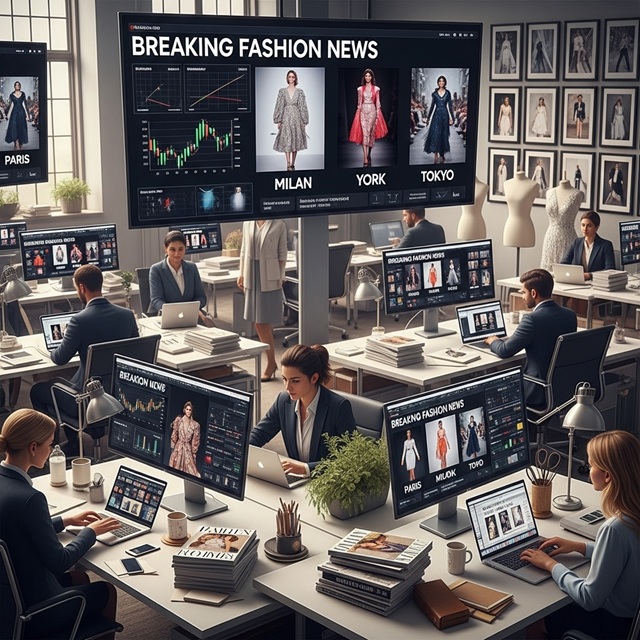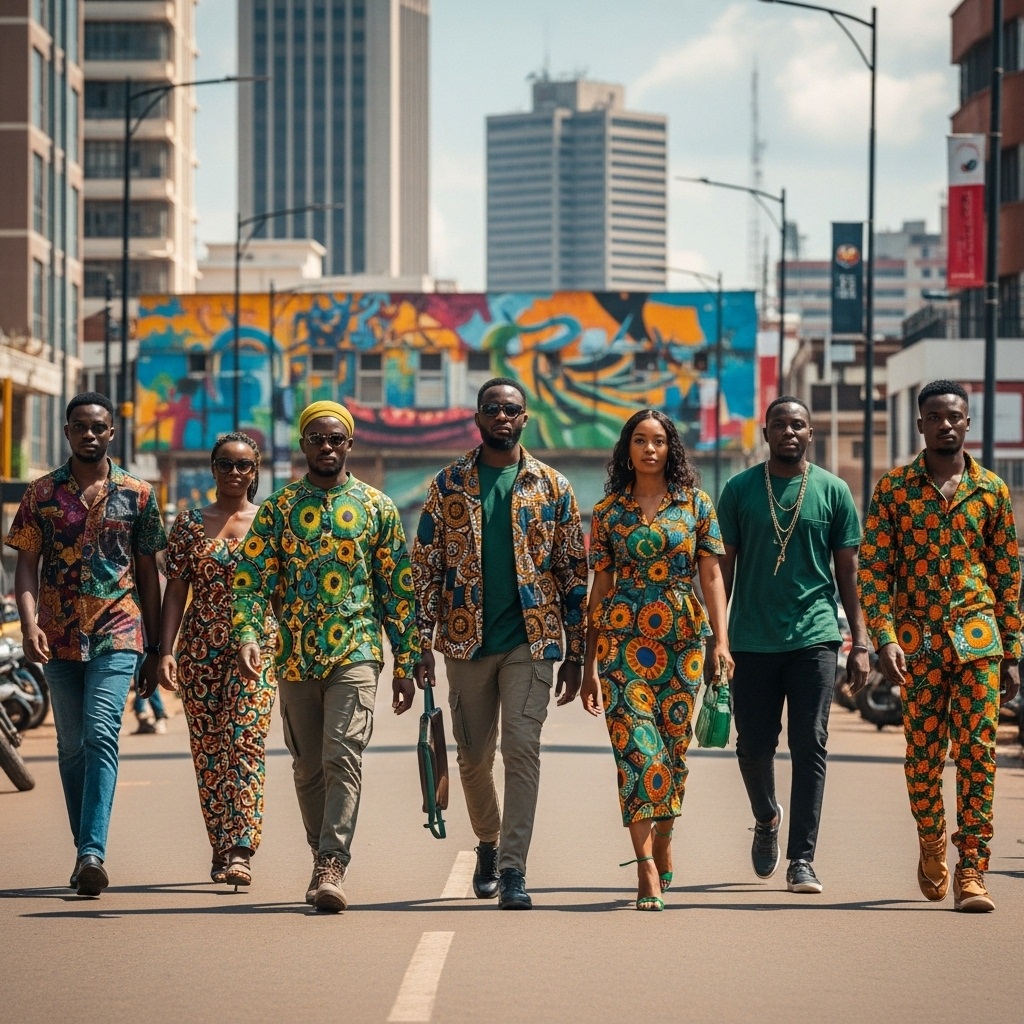Top Countries Leading the Global Fashion Market
Fashion isn’t just about clothes; it’s a full-scale industry that defines cultures, influences economies, and drives global creativity. Some countries have turned style into an identity, shaping trends that echo around the world. From luxury powerhouses to emerging fashion scenes, here’s a closer look at the countries leading the fashion market.
1. France – The Heart of Haute Couture
France, especially Paris, has long been considered the capital of fashion. The French mastered the art of combining sophistication with innovation. Paris Fashion Week remains one of the most prestigious global fashion events, attracting designers, celebrities, and buyers worldwide.
Major French brands like Chanel, Dior, Louis Vuitton, and Givenchy continue to set industry standards. Their designs define elegance and timeless style, influencing luxury fashion far beyond Europe.
French fashion thrives on its heritage while embracing modern aesthetics, making it both historic and forward-thinking.
Related: Which Type of Dress Is Trending Now
2. Italy – The Land of Luxury and Craftsmanship
Italy represents passion, detail, and craftsmanship in fashion. Italian designers have a unique way of blending tradition with luxury, making their work admired globally. Cities like Milan, Florence, and Rome are home to some of the biggest names in fashion.
Gucci, Prada, Versace, Dolce & Gabbana, and Armani showcase Italy’s excellence in design and tailoring. Milan Fashion Week consistently sets global trends and spotlights Italian-made quality that remains unmatched in the fashion world.
The Italian fashion industry also plays a huge role in exports, driving both luxury and ready-to-wear sectors.
3. United States – Where Street Meets High Fashion
The United States, particularly New York, is a global leader in fashion innovation and diversity. Unlike European countries that focus heavily on heritage, the U.S. blends pop culture, sportswear, and street fashion to create its own identity.
New York Fashion Week celebrates creativity from established icons like Ralph Lauren, Tom Ford, and Calvin Klein, alongside emerging designers who redefine modern American style. Los Angeles also contributes with a strong mix of celebrity-driven and sustainable fashion brands.
American fashion thrives on inclusivity, with diverse influences from all over the world reflected in its trends and marketing.
Read also: Ladies’ Trending Fashion in Uganda
4. United Kingdom – A Mix of Tradition and Edge
The UK blends royal elegance with bold street style. London Fashion Week has become a playground for experimental fashion, promoting both classic British tailoring and avant-garde creativity.
Iconic brands like Burberry, Alexander McQueen, Vivienne Westwood, and Stella McCartney symbolize the diversity of British fashion. From Savile Row suits to punk-inspired streetwear, the UK’s approach celebrates individuality.
The British fashion industry also supports sustainable initiatives, with a growing number of eco-conscious designers making headlines globally.
5. Japan – Where Tradition Meets Technology
Japan’s fashion scene is unlike any other. It combines cultural heritage with cutting-edge design and technology. Tokyo’s Harajuku district became famous for its playful and experimental street fashion, influencing global youth trends.
Japanese designers such as Issey Miyake, Comme des Garçons, and Yohji Yamamoto bring artistic, futuristic visions to fashion runways. Their designs often challenge conventional forms, making Japan one of the most creative and forward-thinking markets in the world.
Japan is also a leader in textile innovation, merging sustainability with craftsmanship to produce some of the world’s best-quality fabrics.
6. South Korea – The Rising Star of Asian Fashion
South Korea is quickly becoming a global trendsetter, fueled by the worldwide impact of K-pop, K-dramas, and youth culture. Seoul has transformed into a fashion hub that bridges Western luxury and Asian street style.
Korean fashion brands such as Ader Error, Gentle Monster, and Andersson Bell have gained international recognition. Seoul Fashion Week attracts both local and international attention, proving that South Korea is no longer following trends but setting them.
Social media also plays a big part in Korea’s fashion rise, with influencers and celebrities driving global demand for Korean aesthetics.
7. China – A Giant in Fashion Manufacturing and Luxury Consumption
China’s fashion influence extends beyond manufacturing; it’s now one of the largest luxury markets in the world. The country has a growing appetite for high-end fashion, making it a key destination for luxury brands.
Cities like Shanghai and Beijing are hosting major fashion weeks featuring both international and local designers. Chinese consumers drive global luxury sales, prompting brands like Louis Vuitton and Hermès to invest heavily in the region.
At the same time, local designers such as Guo Pei are gaining global recognition for their creative craftsmanship and storytelling through fashion.
8. Spain – Elegant, Affordable, and Accessible
Spain’s fashion industry has mastered the art of making stylish clothing accessible. The country is home to major retail brands like Zara, Mango, and Massimo Dutti, which dominate global fast fashion.
While not as luxury-focused as France or Italy, Spain’s strength lies in its ability to merge design with affordability. Madrid and Barcelona are also building reputations as fashion-forward cities, thanks to vibrant designers and emerging labels.
9. India – The Fusion of Heritage and Modernity
India’s fashion market is booming, supported by its rich textile history and growing consumer base. Indian designers are blending traditional techniques with global trends, creating a unique style that appeals to both domestic and international audiences.
Designers like Manish Malhotra, Sabyasachi Mukherjee, and Ritu Kumar have taken Indian couture to global runways. The mix of embroidery, color, and craftsmanship keeps India’s fashion deeply rooted in its culture while embracing contemporary aesthetics.
India’s large population and young demographic make it one of the most promising markets for both local and global fashion brands.
10. Nigeria – Africa’s Fashion Powerhouse
Nigeria is leading the charge for African fashion, driven by creativity, bold colors, and strong cultural identity. Lagos Fashion Week has become a major event that showcases both local talent and international designers inspired by African prints and designs.
Designers like Lisa Folawiyo, Orange Culture, and Deola Sagoe are helping to put Nigeria on the global map. Nigerian fashion represents a fusion of modern design and traditional expression, resonating with global audiences seeking authenticity.
Explore more: Cheap Kitenge Fabric in Kampala
The Economic Power Behind Fashion
The fashion industry contributes billions to the global economy. According to the Business of Fashion and McKinsey report, the global fashion market is valued at over $1.7 trillion. Countries that dominate fashion not only influence global trends but also create millions of jobs across design, production, retail, and marketing.
Digital platforms and e-commerce have also shifted how consumers interact with fashion. Countries leading in technology integration, such as the U.S., South Korea, and China, have a significant edge in shaping the industry’s future.
Key Takeaways
-
France and Italy continue to define luxury fashion.
-
The U.S. and UK lead in innovation and street style.
-
Japan and South Korea represent the fusion of creativity and technology.
-
China drives consumption and global manufacturing.
-
India and Nigeria highlight how cultural heritage is shaping modern fashion.
The global fashion market is evolving, but one thing remains clear: fashion is a shared language, spoken differently across borders but understood everywhere.
FAQs About the Leading Fashion Countries
1. Which country is the current global leader in fashion?
France and Italy remain the top leaders, especially in luxury fashion, due to their influence, history, and global brands.
2. Which Asian countries are dominating fashion right now?
Japan, South Korea, and China are major players, each contributing unique elements of creativity, manufacturing, and consumer demand.
3. How does the U.S. differ from Europe in fashion trends?
The U.S. focuses more on casual, inclusive, and pop-culture-inspired trends, while Europe prioritizes heritage, luxury, and craftsmanship.
4. What role does Africa play in the global fashion market?
Countries like Nigeria, South Africa, and Ghana are emerging as cultural powerhouses, promoting vibrant, authentic African fashion worldwide.
5. Are new countries entering the fashion industry?
Yes, nations like Vietnam, Kenya, and Brazil are gaining traction, offering sustainable designs and new perspectives in global fashion.
Summary
From Parisian couture to Seoul streetwear, each country adds its unique touch to the fashion world. The beauty of this global industry lies in how culture, creativity, and business come together to inspire what we wear. Whether it’s luxury or local, fashion remains one of the most expressive ways humanity connects across continents.






